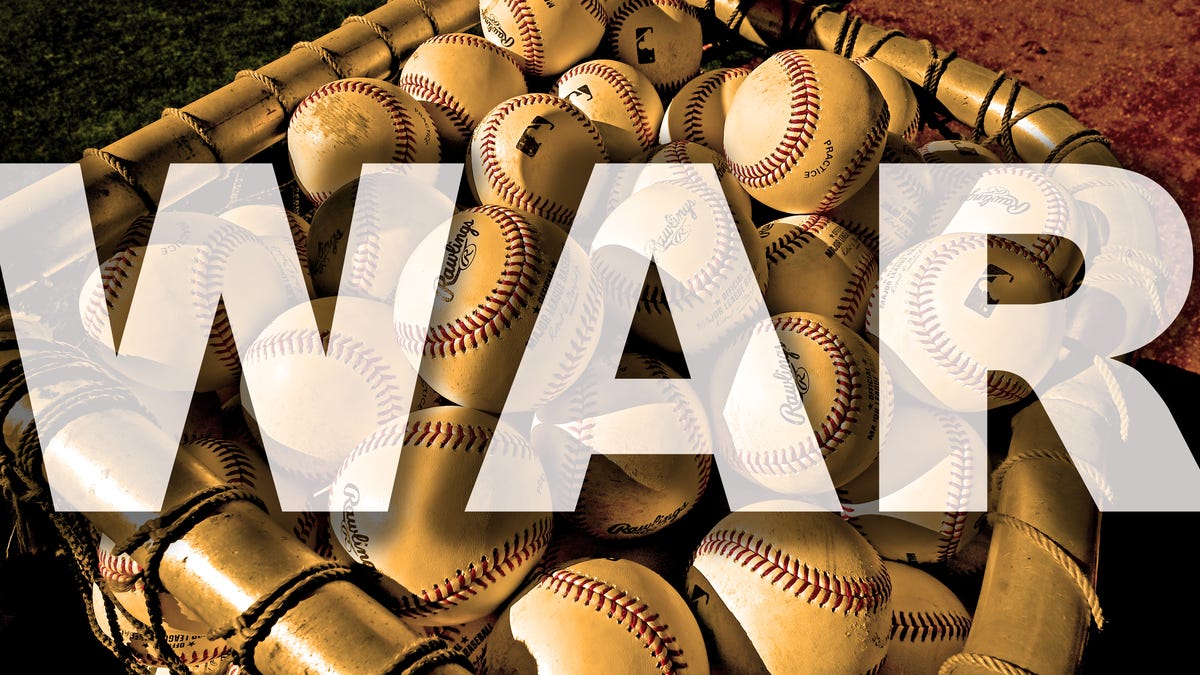WAR isn’t perfect, but don’t disregard it entirely

Advanced analytics are a touchy subject in the baseball world. Some people love how the game has been broken down into a series of numbers that let even casual fans understand the game better. Others don’t share the same sentiment.
The most popular analytic used today is WAR, or Wins Above Replacement. WAR strives to be an all-encompassing baseball stat that determines a player’s value to his team over any given period of time.
Obviously, the stat is very opinion-based, and not rooted in any one statistical measurement. But it’s always been pretty accurate. The best players always land near the top of the league. The worst players always land near the bottom. But that didn’t stop baseball writer Jon Heyman from offering opposing thoughts on the matter.
Heyman’s right. WAR isn’t perfect, but it’s still a good measure. Esteemed baseball writer Tom Verducci has an even stronger opinion. Verducci has called WAR a “junk stat” because certain legends are ranked lower than others many would consider just above average. For example, as I’ve stated in some of my pieces before, Bobby Abreu ranks higher in career WAR than both Vlad Guerrero and Ichiro Suzuki, despite both Guerrero and Suzuki being far better players during their primes. Well, Abreu isn’t just higher than those two, he’s also higher than the likes of Yogi Berra, Mike Piazza, Joe Torre, Larry Doby, and many other Hall of Famers. So, if Abreu, someone who was named an All-Star just twice during his MLB career, ranks higher than these legends, CLEARLY wins above replacement is a broken stat.
G/O Media may get a commission
NO!
Career WAR is an accumulative stat, much like hits, home runs, or a pitcher’s wins and losses. So, why is it that those stats reliant on a players’ longevity are viewed in such high regard when compared to WAR? No one complains that Frank Robinson has more career home runs than Mark McGwire despite McGwire playing five fewer seasons. Omar Vizquel was never a great hitter during his career. He had an OPS over .800 once (1999), yet people love to point out his 2800-plus career hits as a Hall-of-Fame credential…so what makes WAR any different?
If you play long enough, you’re bound to accrue some solid base stats, but what? Since WAR isn’t rooted in any of those physical statistics, it’s worthless? Get out of here.
Heyman’s tweet specifically mentions that Yogi Berra should’ve been higher on this list of all-time catchers because of how flawed WAR is as a measuring stick. However, Heyman seemingly fails to realize that Berra is fifth all-time in catcher WAR, ahead of Mike Piazza, who was ranked higher than Berra in the article Heyman references. That sort of breaks his argument that WAR is what kept Berra lower.
The four players who rank higher than Berra in all-time catcher WAR — Johnny Bench, Gary Carter, Iván Rodríguez, and Carlton Fisk — all had more career plate appearances than Berra, and guess what? That’s how WAR is supposed to work. Berra didn’t play as long (plate appearance-wise) as his counterparts so he didn’t have as much time to up his WAR. That doesn’t necessarily mean that Berra is worse than Fisk or Abreu, it just means that the other guys managed to stay on the field longer, which adds to their career value.
If we’re going to applaud players for reaching certain benchmarks like 500 home runs, 3,000 hits, or even something as minuscule as most games played at shortstop (once again, one of the most common arguments for Omar Vizquel to be in the Hall of Fame), why can’t WAR be viewed the same way? Having a 60 career WAR is remarkable. It shows that a player was able to play at a high level for a very long time. It doesn’t necessarily mean that a player with greater than 60 WAR is better than everybody with less, but it’s just another measuring stick people can use. Lord knows I don’t think Willie Davis (60.7 career WAR) is greater all-time than Andrew McCutchen (46.0 career WAR).
Even if you still think it’s ridiculous, there are other great sabermetrics that use WAR as a baseline to take a player’s prime into account, if that’s more your style. Take JAWS, a statistic created by Jay Jaffe that compares a player’s career WAR with the best seven-year stretch of their career and uses both figures to determine the ultimate value a player provided. Essentially, if a great player played less years than someone else and had a lower career WAR because of it, JAWS allegedly brings that first player’s peak into the equation and provides a more clear picture as to who the more valuable player was. When that gets taken into the equation, Berra actually drops below Mike Piazza on the all-time catcher list.
I’m not saying that WAR is a perfect stat. Neither is JAWS, might I add, but to totally invalidate a person’s opinion because they used a statistic that has been more or less accurate in the years it’s been used, that’s petty and elitist.
Yes, it’s easy to play “narrative ball” with some advanced analytics.
But that doesn’t mean these analytics are useless. They can be great figures for making an argument in defense of any given player, even if they aren’t linked to any tangible statistics.
For all the latest Sports News Click Here

